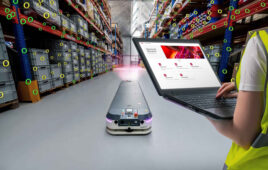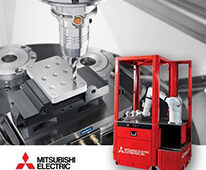Globalization was well underway before the Internet began
transforming the way international business is conducted. Now that
companies can find and contact international suppliers using the Web in
seconds, responding to intercontinental requests has become a critical
part of a successful business strategy.
Barriers of all sorts have tumbled as Internet access made it
easier to find information. In minutes, equipment designers and users
can find far more specifications and pricing figures than they could
glean in days using volumes of outdated catalogs.

Developers
can also tap knowledge that previously would have been available only
in centers of excellence. Expertise that was once found only in a
specific region, like brewing in St. Louis or Germany, can now be
accessed from anywhere, making it simpler for regional specialists to
start companies.
“With the free flow of information, it’s fairly easy for a
manufacturer in Brazil to connect with a company in France or the U.S.,
and it’s easier to approach countries outside your own borders,” says
Malcolm Evans, global business manager, Siemens Industry.
This access to information is creating a global market for
specialized equipment made primarily in a region where there’s a large
demand. But often, companies that have long focused on local customers
are unequipped to meet the challenges of international sales and
support.
Siemens Industry anticipated this happening and established a
program 8 years ago that specializes in helping businesses pull
together all the elements they need to succeed in the international
marketplace.
GloBiz, as it’s
called, has a cross-regional support team with around 120 managers
responsible for more than 190 countries. There’s already a huge demand
for the coordination that these specialists provide–the group is
typically working on “a couple hundred” projects at any given time.
GloBiz staffers help companies meet a range of international
needs. “There are end users who purchase machines and products
internationally and bring them back to the U.S., and there are machine
builders who want to export beyond North America to the rest of the
world,” Evans says.
For small exporters, everything from commissioning to ongoing
support can come with huge questions. Often, commissioning and support
have been addressed by putting a technician from the home office on an
international flight. Internet access makes it possible to eliminate
the cost and time spent on this inefficient solution.

With
many machines, it’s possible to diagnose problems from the home office.
These companies can team up with partners that have global offices. The
partners can provide support personnel who can take the necessary
actions to get equipment running. In some instances, technicians
without specialized training can simply replace parts. Other times,
companies will want to train a technician or two on the nuances of
their equipment. Either way, leveraging an existing sales and support
presence saves plenty of time and expense.
Support issues must be addressed when the equipment is being
developed. Exporters need to be sure they understand local preferences
so they design in popular components. “If you’re shipping to Germany,
NEMA products aren’t a good idea because spare parts won’t be readily
available,” Evans says.
It might seem that as volumes grow, the headaches will decline.
But that’s not always the case. When only one or two machines are
exported, combining equipment from different countries is fairly
straightforward. But when suppliers go beyond low volume custom builds,
the cost of ownership expands. Working with a supplier that has
international operations can then become a big benefit.
International suppliers can work with manufacturers to develop
product specifications that can be issued to machine builders around
the world. That ensures that when machines from different suppliers
come together to form a production line they have common components,
reducing costs of ownership for the life of that production line.
Support staff would then see a familiar look and feel when opening
control panels and software programs inside the controls elements.
Early consideration of this simple step in the planning of a project
will help get the system into the field in less time. “If we can shave
a couple days or weeks off a project, we can save our customers money,”
Evans says.

Though
the shift to the Euro has eliminated some of the complexity of
international sales, currency exchange can still be a complex issue,
one that can be a major challenge for companies with limited exports.
When these companies have a need for services outside their home
region, regional staffers can assist, making it simple to provide cost
estimates for something like getting a repairman to a site in another
country by a given date and pay in home currency. These local offices
can also serve as a way to establish a relationship with customers,
leveraging the cultural experiences of regional staffers.
In many areas, that cultural knowledge extends to speaking the
language. What’s often a major issue becomes an even greater challenge
when manufacturers are in a real or virtual meeting with a customer
from one country and a supplier or two from other countries. “We had a
customer meeting recently where people were speaking Spanish, French,
German and Swahili,” Evans says. “We’re Siemens, we can do that!”
Whether you are an OEM sending machines around the world, or a
manufacturer challenged by trying to find spare parts from a company
that doesn’t have a local presence in your country, Siemens GloBiz can
help you turn your next challenge into a success.
Click here for more information on how Siemens can benefit you on a global scale.
If you have an immediate need for global support, contact Malcolm Evans at 770-871-3869 or
[email protected].
::Design World::
Filed Under: Factory automation, AUTOMATION, Machine tools + subtractive manufacturing





Tell Us What You Think!